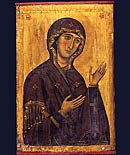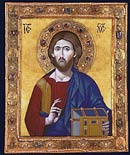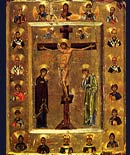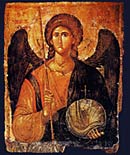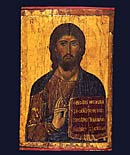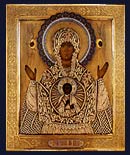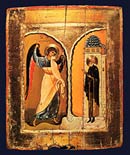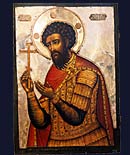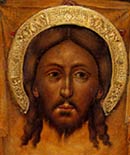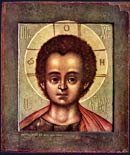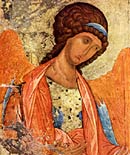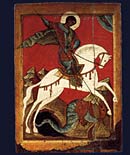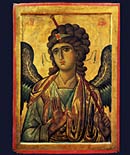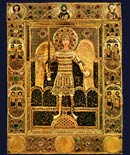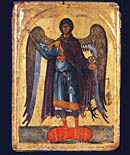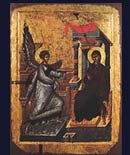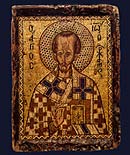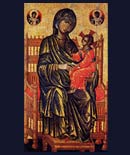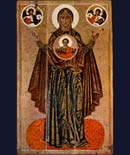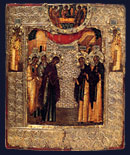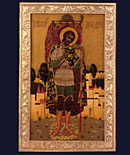How Ikons Are Created - What is Ikonography?
Ikon painting is often called 'ikonography' or the art of 'writing of an ikon'. This is ancient terminology which is used to describe the technique which conveys the image of a medieval scribe carefully copying out a manuscript in exact script. This is an apt picture to visualize this ancient art, since the craft of ikonography involves conscious copying and duplication of long established types. Some might say that ikonography is a lesser art, since it involves a limited number of types and set forms of expression. This is a narrow way of looking at ikon art, which resonates with thousands of subtle nuances indicating the deep spiritual consciousness and cultural roots of the artist. As this spans almost 2,000 years of continuous renewal and reinterpretation of the art the range of expression is far greater than many would expect.
Our modern culture values individual expression above all. The very idea of limits on creativity is considered the antithesis of true art. However, this cultural hedonism is a new phenomena and it is not clear what products of our era will represent the high culture of the 21st century culture to our forebearers. Therefore, whatever judgement our culture places on ikons is rather meaningless to ikons long-term. They will continue to be created, and to nurture and teach future generations.
One possible way to understand ikongraphy and the relation of the painter to the ikon they are painting might be to think of a musician playing a famous piece by Chopin. Most listeners would know the piece very well and listening to it would notice how the rendition of the artist interpreted the composer. The piece would always be Chopin, but it might be a distinctly different rendition. However, it would be noticed if the artist changed the notes or rearranged the piece.
Improvisation in ikon painting is a tricky affair and should be avoided until the technique of ikon painting has been mastered. Improvisation usually involves making ikons 'prettier', which is a subjective reaction. Every generation has it's own idea about beauty and it is virtually impossible to avoid modern elements to enter into an ikon copy. Some of these are so subtle the painter may not even notice them. This is why ikons of different eras look different to us today. In their time these differences would have been less noticeable. Therefore, if the goal is to create the most accurate ikon possible, one with as much of the feel of the original as possible, it is best to conform as closely as possible to every detail of ikon you choose to paint. Over time it is a good idea to select a number of different ikons in different schools of ikon painting. Doing this helps the painter to learn differences in style, palate and methods of painting.
Ikon painting can be a challenging technique to learn, mostly because the modern painter must unlearn many things they have been taught about art. Many of the principals behind ikonography are diametrically opposed to methods of painting generally taught in Western art for hundreds of years. It is not an expressionist art or medium that is sympathetic to bold brushwork. The idealistic forms of ikons require careful study before the flow and balance of line in the drawing can be mastered. The craft of ikonography with its careful and painstaking technique is a process which lends itself to mental concentration and spiritual contemplation.
Like learning the piano, with practice and concentration, beautiful images can be created. With time and work the forms, methods and palate of ikon painting can become second nature to the artist. When that has been achieved the ikon painter can attempt more personal expression, but not before. At the same time it is not just an issue of technique and a subconscious identification with medieval ideas of beauty. The most successful ikons are painted by artists who understand and can identify closely with the subjects they are painting as well as having an understanding of history. Reading books on Orthodox spirituality, ikons, or prayer are all helpful in achieving a true comprehension of the real essence of ikons. A page of links to Orthodox and tempera painting sites, which may assist in further study, is included with this website.
Request a quote on a painting seen on this page or a new commission from Bob Atchison, click here.
Next chapter: What you will need to get statrted with ikon painting
